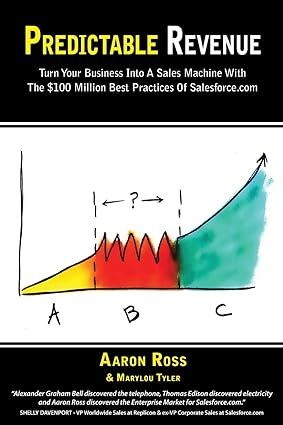In July 2020, I read Aaron Ross' Predictable Revenue.
In July 2020, I read Aaron Ross' Predictable Revenue.
Inspired, I architected a system to send thousands of targeted outbound emails.
The result - 50+ booked meetings.
But with the evolving pace of the market, last week, I asked myself a question.
Would those same 2020 strategies work today in 2025?
It can feel that almost every distribution channel is poorly suited to the realities of being “early-stage”.
It's not because those channels are inherently "bad".
It’s because the success criteria required to make them work likely don't yet exist.
Consider several traditional B2B channels — and why they can feel so challenging for young companies:
→ Outbound.
The days of blasting cold emails to a list, and expecting results, are long gone. The channel works best with a differentiated offer, targeted data, strong unit economics, sales assets like case studies — and ideally, some brand awareness. Early-stage teams are still in the process of building all of that.
→ SEO.
Often positioned as a “free” growth channel — in reality, it rarely is. Ranking well in search takes time, content resources, backlinks, and a clear strategy. And SEO is slow to compound. If you need customers today, SEO won’t help. Worse still, if there’s uncertainty around one's target customer (which there often is early on), there's a risk of driving traffic that turns out later to be entirely the wrong audience.
→ Social media marketing.
Building an audience takes time — sometimes a lot of it. And just like SEO, there’s always the risk of investing months into building the wrong audience. Early-stage companies are still figuring out their ICP, offer, and positioning. If those things change — and they usually do — the audience might not move with any re-positioning. Inbound content works best when it speaks directly to clear customer pain points. But if one doesn't know exactly who the customer is yet, knowing what to post becomes a challenge.
→ Paid acquistion.
This might seem like the quickest route to traction — and technically, it can generate traffic fast. But doing paid well is expensive. Ad platforms operate as auction mechanisms, and competition is intense. Creative assets fatigue quickly. And unless one's unit economics are already in a good place, paid channels can end up burning budget fast.
-------------
Challenges are compounded by early stage companies having sub-optimal unit economics. There’s uncertainty around the ideal customer, positioning is still being tested, the sales process is rough, pricing models are evolving, and the product itself might still have major gaps.
As the saying goes: the company that can afford to pay the most to acquire a customer usually wins. But in the early days, most startups are a long way from being that company.
So given the above, what are some ideas on how to best approach early stage distribution?

